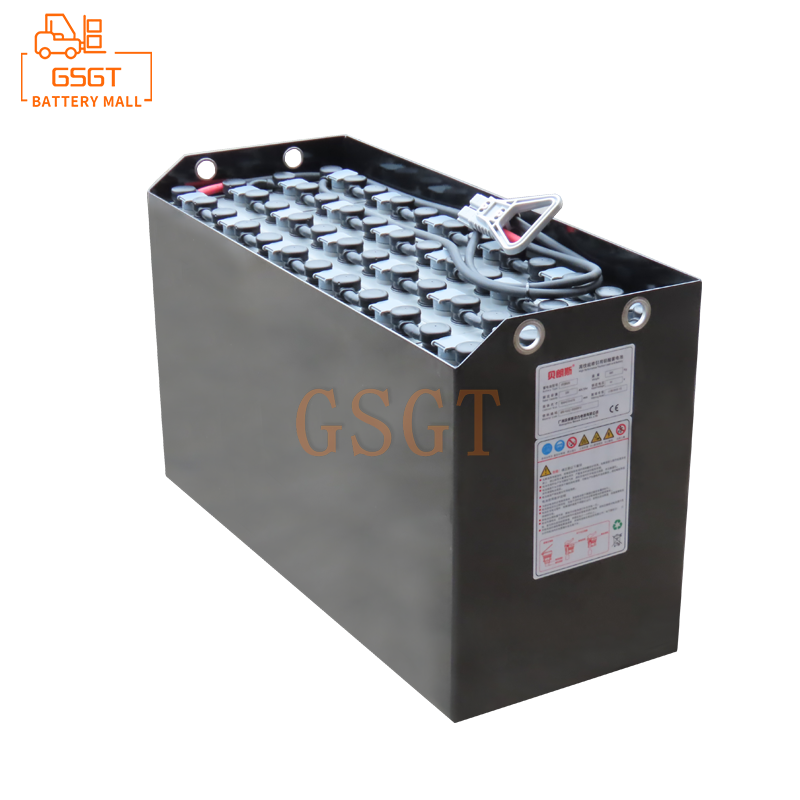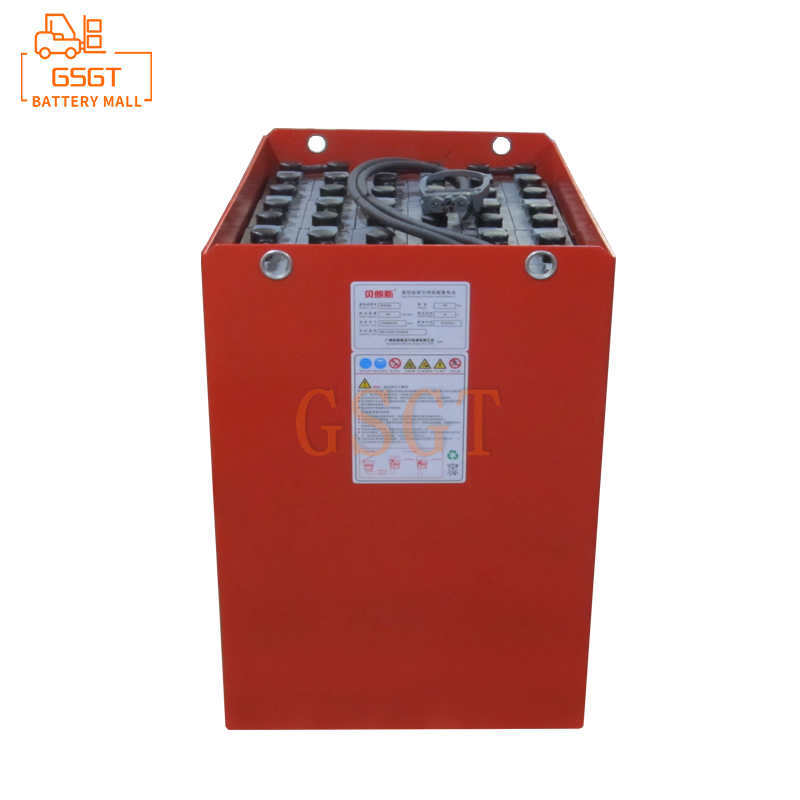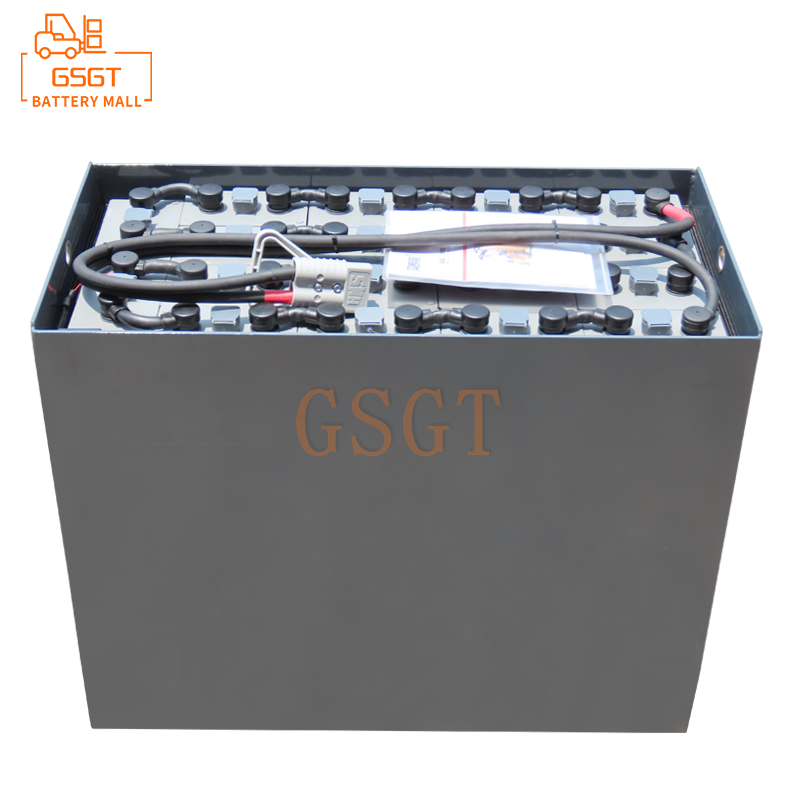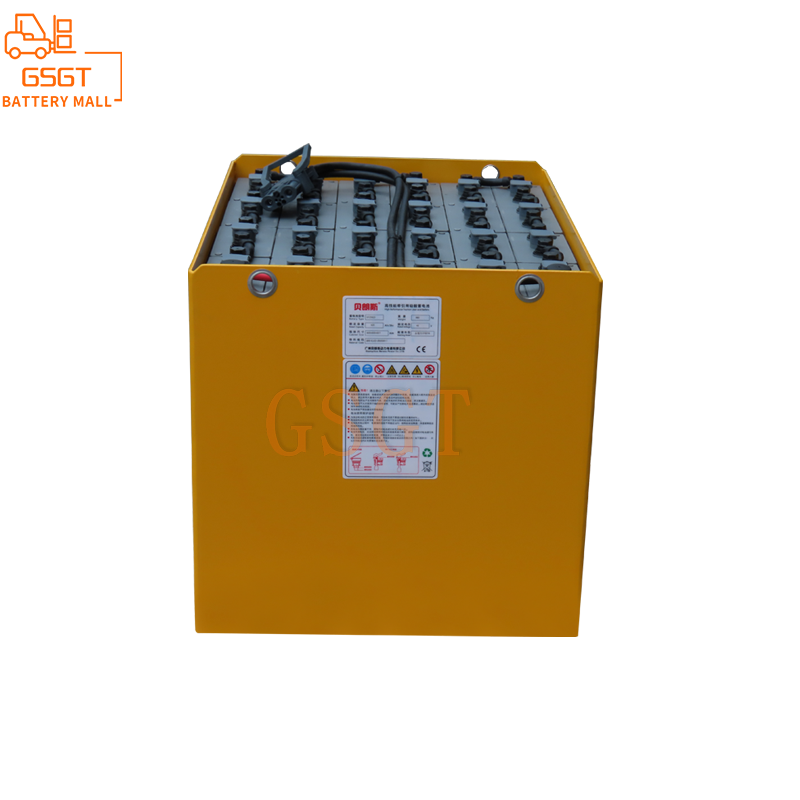Time:2025-04-02 16:49:47
Browse:593
In the field of forklift power, lead-acid batteries occupy a very important position with mature technology, reasonable cost and superior performance of high current discharge. The operating environment of forklift trucks is complex and changeable, from frequent start-stop handling of indoor warehouses to long-distance transportation of outdoor logistics parks, lead-acid batteries need stable energy supply. However, to ensure the stable and efficient operation of lead-acid batteries under various working conditions, give full play to their performance and ensure the safety of use, a deep understanding of their internal structure is the key.
Plate: Core reaction carrier
As the core component of the electrochemical reaction of lead-acid batteries, the plate can be divided into positive plate and negative plate, which play different but closely related roles in the process of battery charging and discharging.
The active material on the positive plate is mainly lead dioxide (PbO₂), which has a dark brown appearance. When discharged, lead dioxide participates in a complex chemical reaction. In sulfuric acid solution, it accepts electrons and interacts with the hydrogen ion (H +) in solution and the sulfate ion (SO₄²⁻). It forms lead sulfate (PbSO₄) and releases oxygen. In the charging process, lead sulfate is re-converted into lead dioxide under the action of electric energy, and the whole process is accompanied by the transfer of electrons and the REDOX reaction of substances, and the smooth progress of this process is the basis for the battery to achieve energy storage and release.
The active substance of the negative plate is sponge-like pure lead (Pb), with a bluish gray appearance. When discharged, lead atoms lose electrons and enter the electrolyte as lead ions (Pb² +), which then combine with sulfate ions to form lead sulfate attached to the surface of the plate. When charging, lead sulfate accepts electrons that are reduced to lead, and the negative plate returns to its initial state.
The manufacturing process of the plate has a decisive influence on the performance of the battery. In the production of high-quality plates, a special paste process is used, which allows the active material to be uniformly and firmly attached to the grid. As a skeleton to support the active material, the grid is generally made of lead alloy, common lead alloy types are lead antimony alloy and lead calcium alloy. The early widely used lead-antimony alloy grid, with its high strength, provides stable support for active substances. However, with the advancement of the use process, the disadvantages of antimony gradually appear, it will accelerate the battery water loss, shorten the battery maintenance cycle and the overall service life. In contrast, the lead-calcium alloy grid with its low gas extraction rate characteristics, can effectively reduce the rate of water loss, greatly extend the battery maintenance cycle, so it is more widely used in modern lead-acid battery manufacturing.
If the plate manufacturing process is not up to standard, it will cause many problems in the subsequent charge and discharge cycle. The active substance may fall off from the plate prematurely due to weak adhesion and stress caused by electrochemical reaction during charging and discharging. Once this happens, the number of active substances involved in the electrochemical reaction gradually decreases, and the battery capacity will decrease, ultimately resulting in the battery being unable to meet the needs of the normal operation of the forklift. For example, in some poor quality battery products, after only a few hundred charge and discharge cycles, there is an obvious phenomenon of active substances falling off the surface of the plate, the battery capacity is rapidly attenuating, the driving range and working efficiency of the forklift are greatly reduced, and the battery has to be replaced frequently, increasing the operating cost.
Electrolyte: ionic conduction medium
The electrolyte undertakes the critical mission of ion conduction in lead-acid batteries and its main component is an aqueous solution of sulfuric acid (H₂SO₄). In the microscopic world inside the battery, sulfuric acid molecules ionize, breaking down into hydrogen ions (H +) and sulfate ions (SO₄²⁻). In the process of charge and discharge, these ions are like busy "messengers", which move directionally between positive and negative plates to achieve the transfer of charge, and then promote the electrochemical reaction to continue.
Electrolyte density is one of the key parameters affecting battery performance. In general, at room temperature, the electrolyte density suitable for lead-acid batteries ranges from 1.24-1.30 g/cm³. When the electrolyte density is higher, the electromotive force of the battery increases correspondingly, which enables the battery to output higher voltage and larger current. This characteristic is particularly important when the forklift truck is faced with heavy load handling, frequent start and other conditions requiring instantaneous large current output. However, too high electrolyte density is not without disadvantages, it will accelerate the corrosion rate of the plate, shorten the overall service life of the battery. On the contrary, when the electrolyte density is low, the low temperature performance of the battery will be improved to a certain extent, and it can maintain a relatively stable working state in a cold environment, but its output power will be limited to a certain extent. For example, in the cold winter, the electrolyte density is properly reduced, which can effectively prevent the electrolyte from expanding due to low temperature icing, damaging the internal structure of the battery, so as to ensure that the battery can work normally.
In addition, the purity of the electrolyte is also crucial. If impurities are mixed into the electrolyte, these impurities may cause side reactions on the surface of the plate, consume the active substance, and reduce the performance of the battery. What is more serious is that some impurities may lead to internal short circuit of the battery, causing the battery to discharge instantaneously, generating a lot of heat, and then leading to serious safety accidents such as battery bulge, leakage and even fire.
Partition: A barrier to prevent short circuits
As the "isolation guard" between positive and negative plates, the partition is a key component to prevent short circuit caused by direct contact between positive and negative plates. It not only needs to have good insulation properties to prevent the direct flow of electrons, but also needs to have a special porous structure to ensure that ions in the electrolyte can pass freely, so as to ensure the smooth progress of electrochemical reactions.
Spacers are usually made of a variety of porous materials, common rubber spacers, plastic spacers and glass fiber spacers. Among these materials, glass fiber separator has been widely used in modern lead-acid batteries by virtue of its unique performance advantages. Glass fiber separator has the characteristics of small aperture, strong liquid absorption ability and good chemical stability. Its fine pore size can effectively adsorb the electrolyte, so that the electrolyte is evenly distributed around the plate, providing a stable environment for the electrochemical reaction, ensuring that the reaction can be uniform and efficient. At the same time, its pore structure is extremely fine, which can effectively block the active material particles falling off the plate and prevent these particles from bridging between the positive and negative plates, so as to avoid the occurrence of short circuit.
If the partition is damaged or of poor quality, there may be a short circuit between the positive and negative plates, which will cause the battery to discharge instantaneously and release a lot of heat. In a short period of time, the internal temperature of the battery rises sharply, which may cause problems such as battery bulge and leakage, and even cause serious safety accidents such as fire. For example, in some batteries with inferior partitions, because the partitions cannot effectively block the migration of active substances, short circuit failures frequently occur after a period of use, which not only greatly shortens the battery life, but also poses a serious threat to the safety of forklift operation.
Shell: Fortress of protection and support
The shell of the lead-acid battery shoulders the dual responsibility of protecting the internal components and supporting the overall structure. In view of the working characteristics of the forklift truck, vibration and shock will occur during operation, and the battery will be in contact with the corrosive electrolyte for a long time, so the shell needs to have good mechanical strength to withstand these external forces, and at the same time, it should have excellent chemical resistance to prevent the electrolyte leakage from eroding the shell.
The early battery shell mostly uses hard rubber material, although hard rubber has a certain corrosion resistance, but its weight is larger, which increases the load of forklift trucks to a certain extent, affecting the energy efficiency. Moreover, the molding process of hard rubber is more complicated and the production cost is higher. With the development of materials science, engineering plastic shells have become the mainstream choice for battery shells with many advantages such as light weight, convenient molding and low cost.
The high-quality housing is designed with the battery environment and safety in mind. The sealing performance of the shell is particularly critical, and a good seal can effectively prevent electrolyte leakage. Once the electrolyte leaks, it will not only reduce the battery performance, but also cause corrosion to the metal parts of the forklift, affect the normal operation of the forklift, and even pollute the surrounding environment. In some scenarios where forklift trucks operate in harsh environments, such as chemical warehouses, where there are various corrosive gases, a shell with high sealing performance and strong corrosion resistance can greatly improve the service life and safety of the battery.
The internal structure of the lead-acid battery is like a sophisticated and complex machine, and the various components cooperate and complement each other, jointly determining the performance, safety and life of the battery. Whether it is forklift operators, maintenance personnel or battery R & D and production personnel, in-depth understanding of these internal structure knowledge will help to correctly use and maintain batteries, improve battery performance, prevent safety accidents, give full play to the advantages of lead-acid batteries in the field of forklift power, and provide reliable guarantee for the efficient operation of industrial logistics.

$1440

$2725

$2140

$2535

MESSAGE
Professional And Efficient
Security
Affordable Price
Professional Services